MLB Free-Agency Preview: 2018-2019 Free Agent Catchers

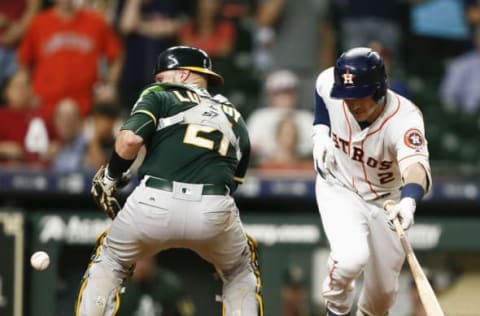
There is still plenty of baseball left in 2018. However, following the trade deadline, it’s time to begin thinking about who will be free to negotiate with all 30 clubs. We have decided to begin profiling the upcoming MLB Free Agency class as well, starting with the players in the squat.
Many have been looking at the 2018-2019 MLB Free Agency class for years in anticipation of the star power that will hit the open market this offseason. We will look at each position group for the upcoming MLB free agency class in a series here on Call to the Pen, starting today with the guys donning the tools of ignorance.
This offseason is set to have one of the deepest group of catchers available in free-agency in a long time. Highlighted by a couple of the best catchers in baseball, a few other solid starters, and a host of good backups will give teams plenty of options.
Some notable players who just missed the list are Jonathan Lucroy, Jeff Mathis, Matt Wieters, and Drew Butera. Lucroy once was considered one of the best in the game and Wieters was once the best prospect in baseball, but age has taken it’s toll on them and will leave them as an emergency option for a team.
Though they won’t make this list, Lucroy and Wieters could make an option for a team as a starter if the teams believe they could coax better seasons out of the two of them. Both have exhibited premier defensive skills and at least above-average offensive skills, if not elite offensive skills for a catcher.
Mathis and Butera are career backups who have been around quite awhile. Both are soft-hitters who are very good defensively. Mathis is a step above Butera because of his elite framing ability. Both could be defensive backups that would be pursued for that purpose.

#10 Devin Mesoraco
Devin Mesoraco burst onto the scene in 2014. In only 352 plate appearances Mesoraco jacked 25 home runs and put up a 4.5 WAR (via FanGraphs). The Reds inked their budding star to a 4 year $28m contract. The deal almost immediately backfired.
In May of the next season, Mesoraco went on the DL for a left hip injury that eventually required surgery. Early in 2016, Mesoraco tore the labrum in his throwing shoulder and lost another season. Then the injury bug struck again last year, when Mesoraco required surgery on his right hip.
He’s avoided the DL this season and since being swapped for Matt Harvey has brought his seasonal stats to respectable levels. Still, his extensive injury history and well below-average framing numbers make it unlikely any contender will give him a chance at a starting spot.
However, on a small 1-year deal, a rebuilding team might hope to rekindle some old magic before moving him for prospects. If not, he’ll land somewhere as an average backup.
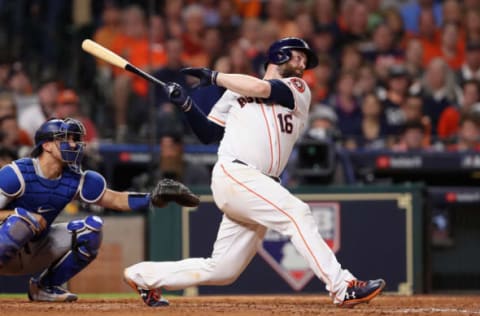
#9 Brian McCann
Brian McCann has been one of the most consistent players in the game since his first call-up in 2005. It looks like age and injuries have finally caught up with him though. He will be 35 years old before pitchers and catchers report next season and a series of recent injuries have kept him on the sideline for most of the season.
It is worth noting that McCann has a vesting option for next season worth $15m. While, McCann will not reach the requirements for the option to vest, technically the Astros could still accept the option. That would be the surprise of the offseason though.
McCann has been steadily declining over the past few seasons even when he has been on the field. This year his OPS is barely .600 and the Astros acquired Martin
Maldonado because they do not trust McCann for the stretch run.
Metrics still believe McCann is above average defensively (along with middle of the pack framing numbers) and his long pedigree may get someone to give him a chance to start. Still, the most likely outcome follows Mesoraco. Start on a bad team hoping to turn some magic into prospects, or be a quality backup for a contender.
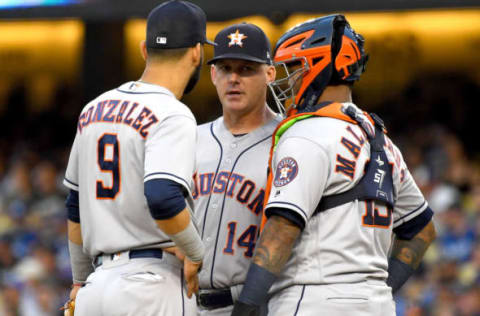
#8 Martin Maldonado
Martin Maldonado began the season as the starting catcher for the Los Angeles Angels. As I mentioned on the last slide, the Astros gave up some low-level pieces to buy themselves some insurance on McCann. Since arriving in Houston, Maldonado has been splitting time with Max Stassi.
Maldonado’s triple-slash line won’t impress anyone: .218/.280/.329, it actually nearly mirrors McCann’s. More surprisingly, these numbers do not stray far from Maldonado’s normal. This season his wRC+ is only 2% lower than his career numbers (70 in 2018 to 72 for his career).
However, Maldonado made a name for himself with the glove. He is one of the best defensive catchers in the game, before you take his well above-average framing into account, which ranks in the top 20 in baseball via Baseball Prospectus.
Maldonado offers very little offensive potential, but his defensive capabilities make him a step above Mesoraco or McCann. Still, he is most likely headed for a high value backup role on a contender where his bat will be a non-concern.
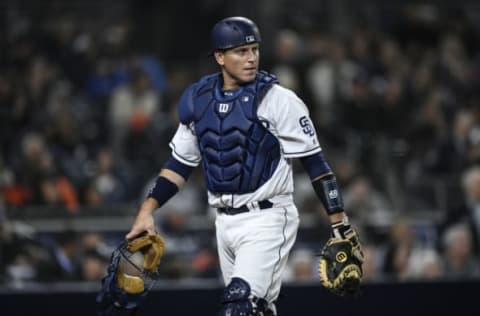
#7 A.J. Ellis
A.J. Ellis did not make his major league debut until he was 27 years old with the Dodgers. Since, Ellis has carved a career out of being a solid backup. Father time is counting down on Ellis, set to turn 38 next year, but don’t tell Ellis that. He is in the middle of his best season.
He has benefited from a large amount of batted-ball luck (.370 BABIP), but a .290/.403/.375 triple-slash line surely guarantees him another job next season. While his framing leaves plenty to be desired, the standard defensive catching metrics still show Ellis as an above-average defender.
Ellis lacks the upside of the previous three but is also a surer bet, which is generally more desirable in a backup. He lacks power (.083 iso), but his patience makes up for it (15% walk rate) and makes it less likely he will go through an extended slump.
He’ll once again land a backup job and has the tools to help a contender as well.
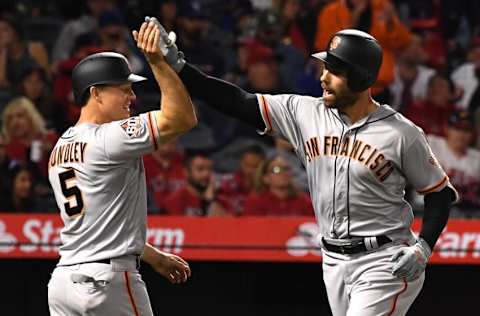
#6 Nick Hundley
Nick Hundley is a mirror image of Ellis at the plate. He doesn’t make consistent contact or work a lot of walks (25.9% K-rate to 5.9% BB-rate), but has made up for it with plus-power (.160 career iso). Hundley is in the midst of the best power-hitting season of his career (.207 iso) and has helped cover for Buster Posey‘s underwhelming campaign in San Francisco.
Like Ellis, traditional defensive metrics like Hundley, but show well below-average framing numbers. Still, Hundley’s potential to hit the ball out of the park tied in with solid defense makes him attractive to anyone.
I would be surprised to see Hundley leave San Francisco. The Giants re-signed him last season for $2.5m when other options would have been more amenable to their luxury-tax situation. He has rewarded them with another solid season and I would expect to see him back in orange in black in 2019.

#5 Kurt Suzuki
Kurt Suzuki has been somewhat of an enigma throughout his career. After bursting onto the scene in Oakland, putting up back-to-back 3 WAR seasons in 2008 and 2009, he has never reached that production again.
After leaving Oakland, he failed to regain his power. After hitting 14 home runs a year in his final three seasons in the Bay Area, he failed to top 8 in his next five seasons. Then, out of nowhere he hit a career-high 19 in 2017 and has 8 homers in only 75 games this season.
It doesn’t look like that’s luck either. Here’s Suzuki’s average launch-angle over the past few seasons according to Baseball Savant:
2015 Average Launch-Angle: 12.5
2016 Average Launch-Angle: 14.9
2017 Average Launch-Angle: 18.2
2018 Average Launch-Angle: 19.2
The data suggest that Suzuki has been making an attempt to generate more long-balls. So far, the results have been good. Suzuki, like Ellis and Hundley, is a below-average framer, but an above-average defensive catcher overall.
What separates Suzuki from Hundley, is even with his increase in launch-angle he continues to put the ball in play. Since coming into the league, only 1 active catcher (Yadier Molina) has struck out at a lower rate.
His propensity to put the ball in play makes him more vulnerable to BABIP luck, but the potential to hit for a high average and some pop makes him a fringe-starter (as he is now in Atlanta) to high-level backup.

#4 Tyler Flowers
Tyler Flowers is Suzuki’s cohort in Atlanta, but his elite-framing ability (top 10 in the league) will make him more desirable to more teams. It’s possible no one would hand him a starting job, but almost every team would love to have a backup like Flowers.
This season has begun walking at a great 14.4% clip, which adds another layer to his ability. He is in many ways an upgraded version of A.J. Ellis.
If you had to decide who would rather start between Suzuki and Flowers, you would pick Suzuki. However, more teams look for backup catchers on the market than starters, which leave Suzuki with fewer suitors than you would expect.
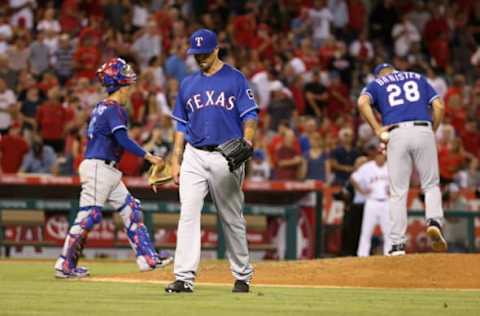
#3 Robinson Chirinos
If Flowers is an upgraded Ellis, Robinson Chirinos is an upgraded Hundley. Chirinos has struggled with framing, but overall has put up positive defensive value (via FanGraphs WAR). His real value though, is where he can hit the ball.
Since joining the Rangers, Chirinos has hit over 28 long balls per 550 at-bats. That power does come with a cost. Chirinos has already struck out 115 times in 2018 and over his career has struck out in over a quarter of his plate appearances. His discipline does make up for his lack of consistent contact.
Chirinos will be an interesting test case in free agency. He has shown the ability to start. However, at 34 years old I’d be surprised to see a contender entrust him with their starting spot. A return to Texas or another lower-tier team would make sense. Regardless, Chirinos should be getting the lion share of playing time somewhere in 2019.
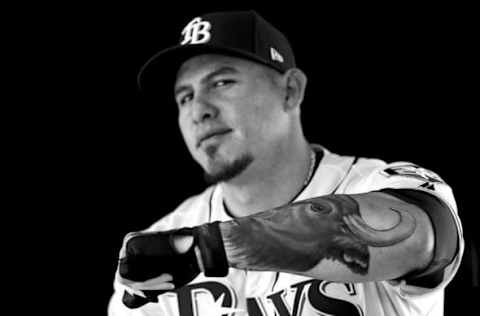
#2 Wilson Ramos
Wilson Ramos should be under a massive contract. He was in the middle of an MVP caliber season in 2016. Set to become a free-agent he was setting up to become one of the highest-paid catchers in baseball. However, in September, he suffered a knee injury that would end his season and cost him a large amount of time the next year.
He signed a small scale deal with Tampa Bay and tried to work his way back to 100%. In 2017, he returned but failed to reach the level of his 2016 performance. This season, however, Ramos is putting up a .297/.346/.488 triple-slash line.
The injury bug struck Ramos once again, this time though it was just a mild-hamstring injury. The Rays were still able to move Ramos to Philadelphia for some prospects. He has yet to make his Phillies debut, but he should be ready soon.
If Ramos has a strong finish to the season he will set himself up to cash in. With his injury history, it will be interesting to see if a team is willing to give the soon to be 31-year-old a 3-year offer. A high annual-average over two years is a likely starting point for his market.
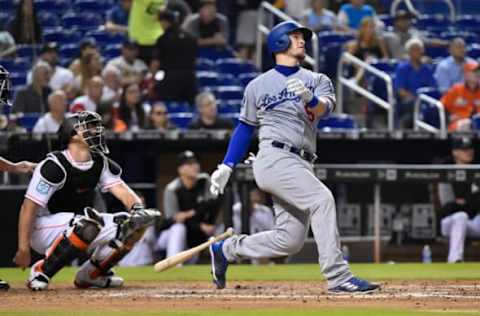
#1: Yasmani Grandal
The Dodgers acquired Yasmani Grandal in one of the biggest heists in recent MLB history. Not only did it help them move Matt Kemp‘s large contract, Grandal has been an integral part in LA’s recent success.
Grandal has put up between 2.3 and 2.9 WAR in each of his seasons in LA. He’s on pace to blow past that number this year as well (already at 2.9). That may be underestimating his value as well. He is one of the best framers in baseball (#2 according to Baseball Prospectus).
He is one of the best defensive catchers in the game and is producing 34% more runs than the average hitter (134 wRC+). Grandal chose the perfect time to have a career year and it is setting up nicely for his earning potential.
Grandal will have plenty of suitors this off-season and he will likely receive the largest free-agent catcher contract since Brian McCann signed his 5 year $85m contract with the Yankees. There may even be an argument that Grandal will garner a contract offer over $100m.
Grandal highlights a very deep catcher class that has two of the ten best backstops in baseball, a number of fringe-starters, and a plethora of productive backups.
dark. Next. Top 20 CF in MLB History
So what do you think of this list of the best catchers available in MLB Free Agency? Comment below!